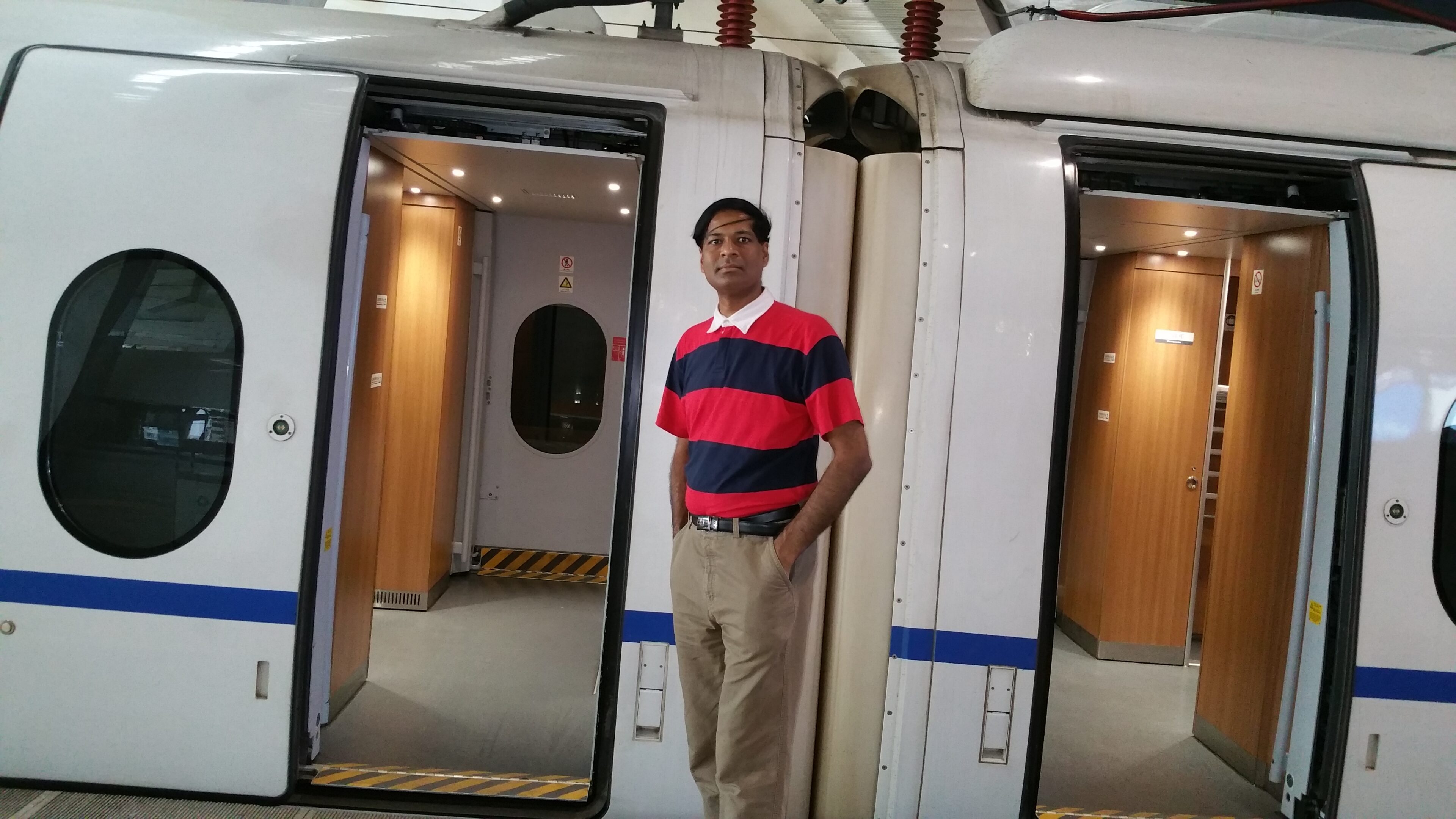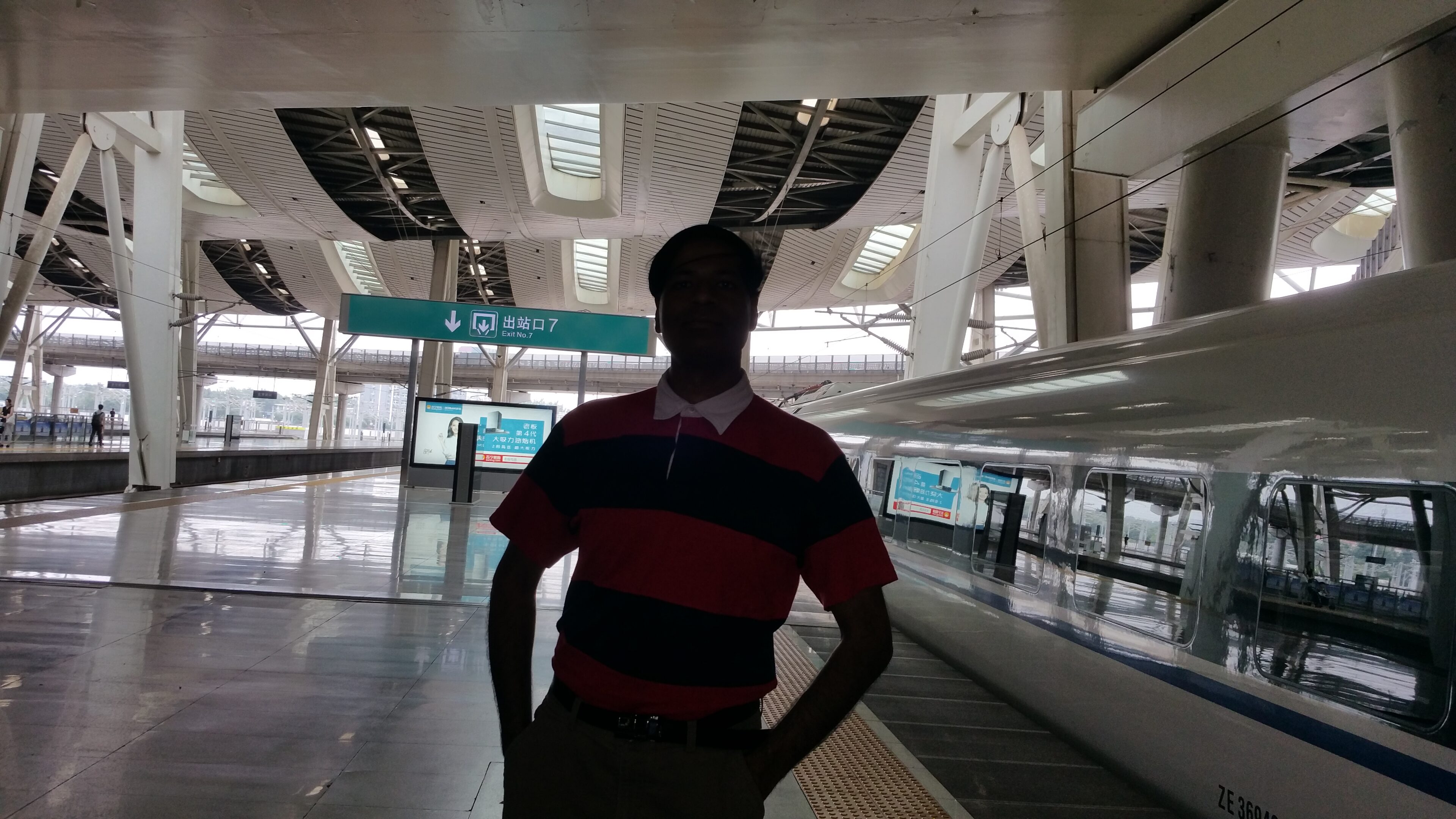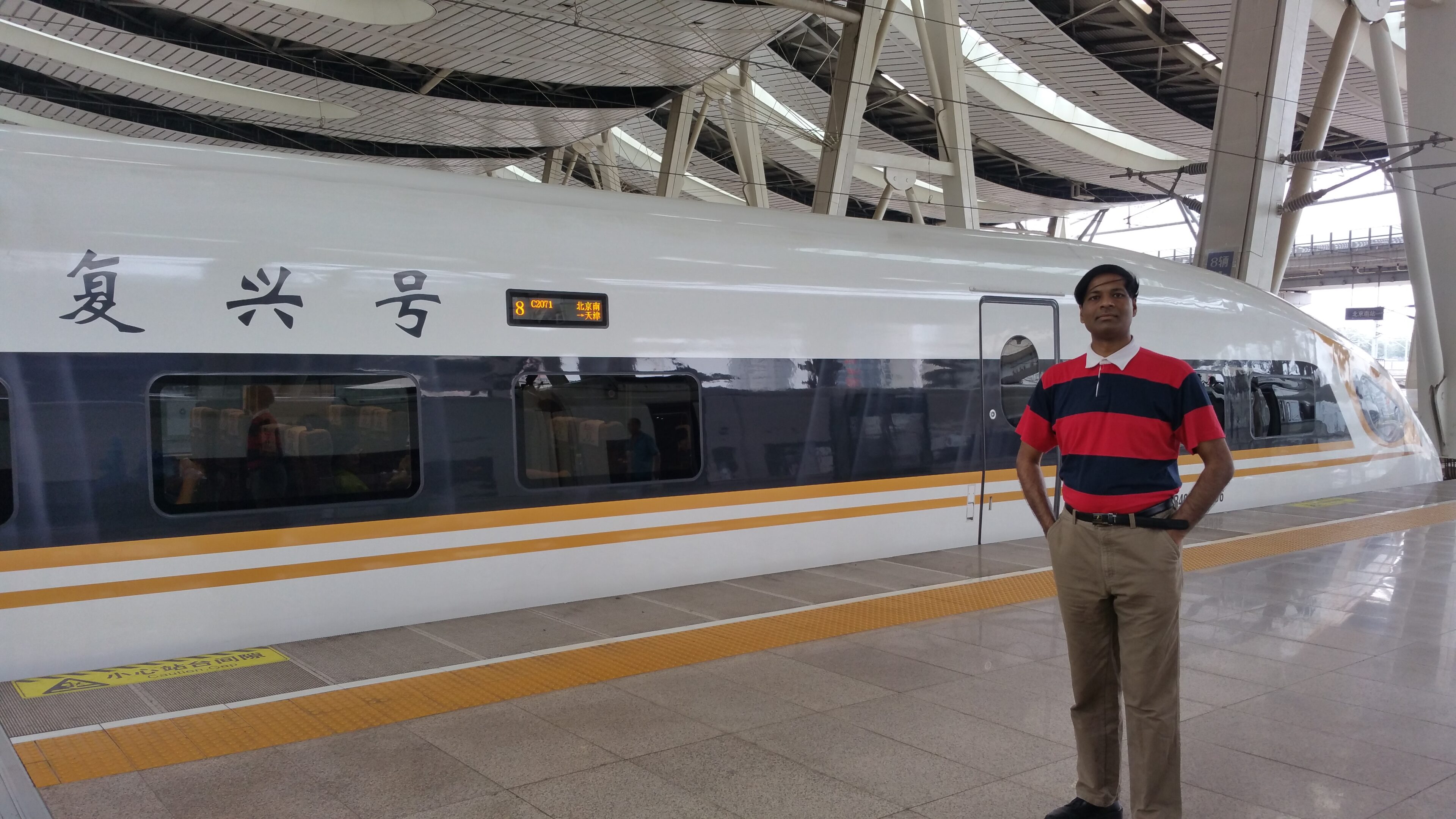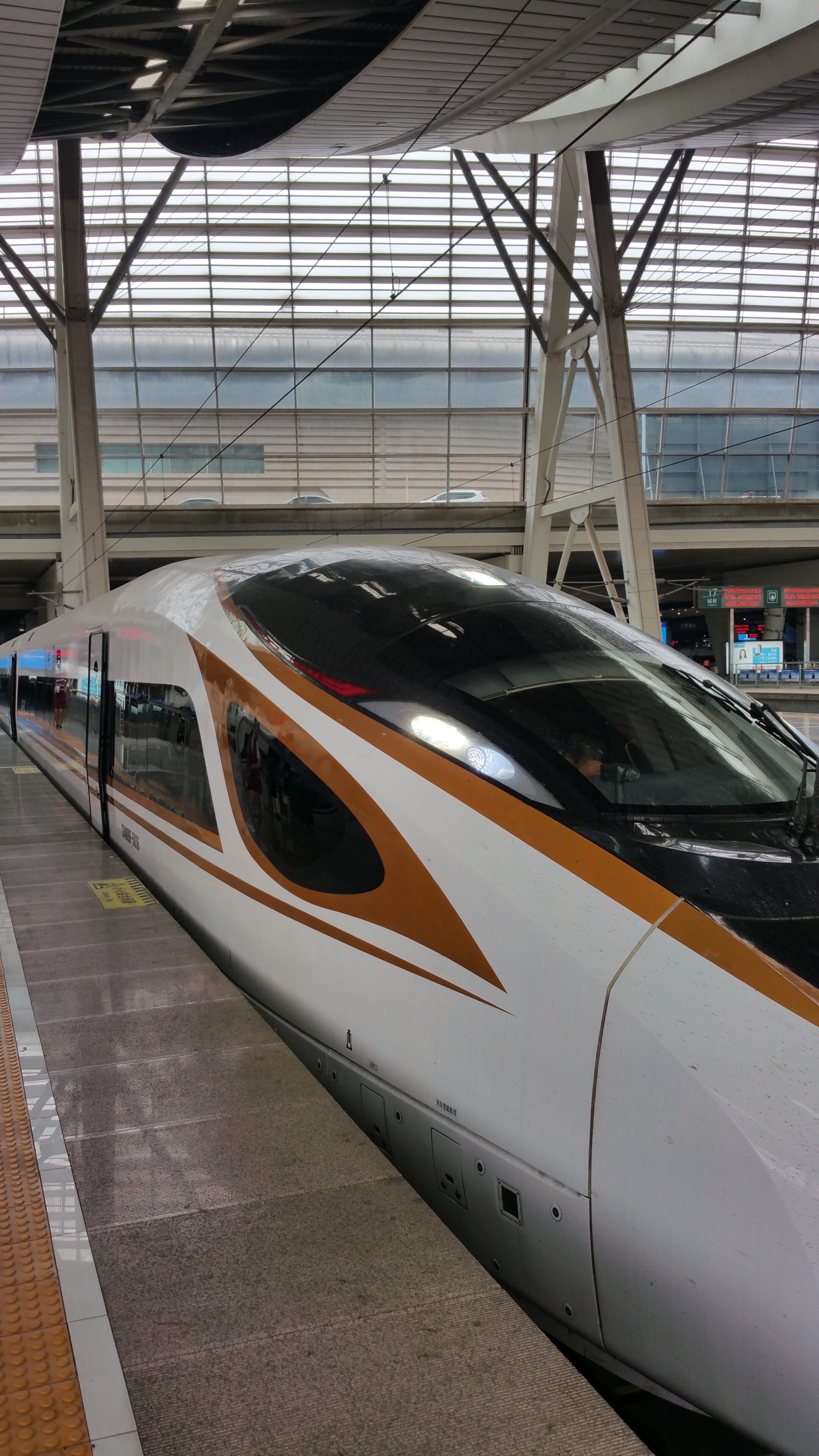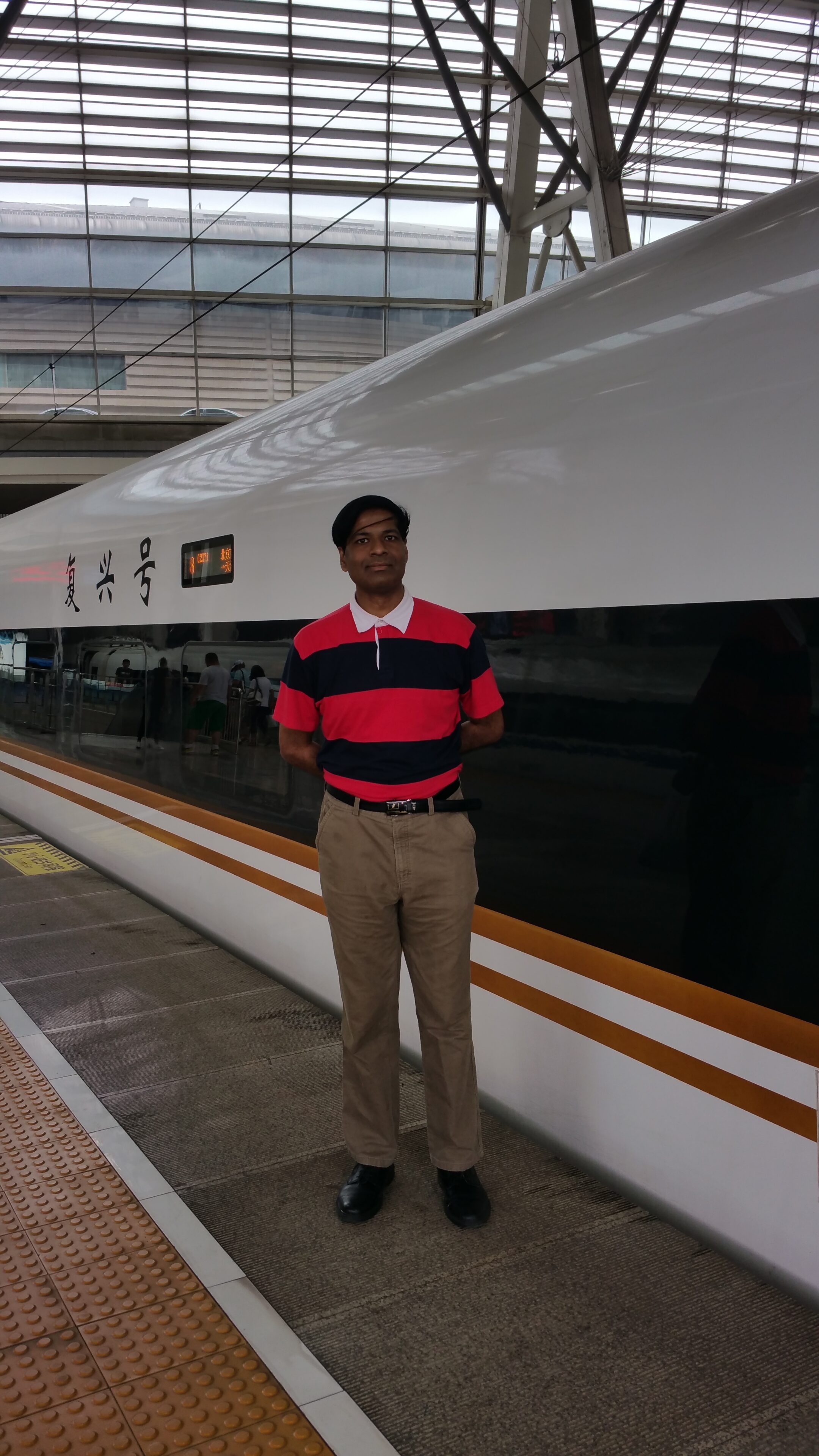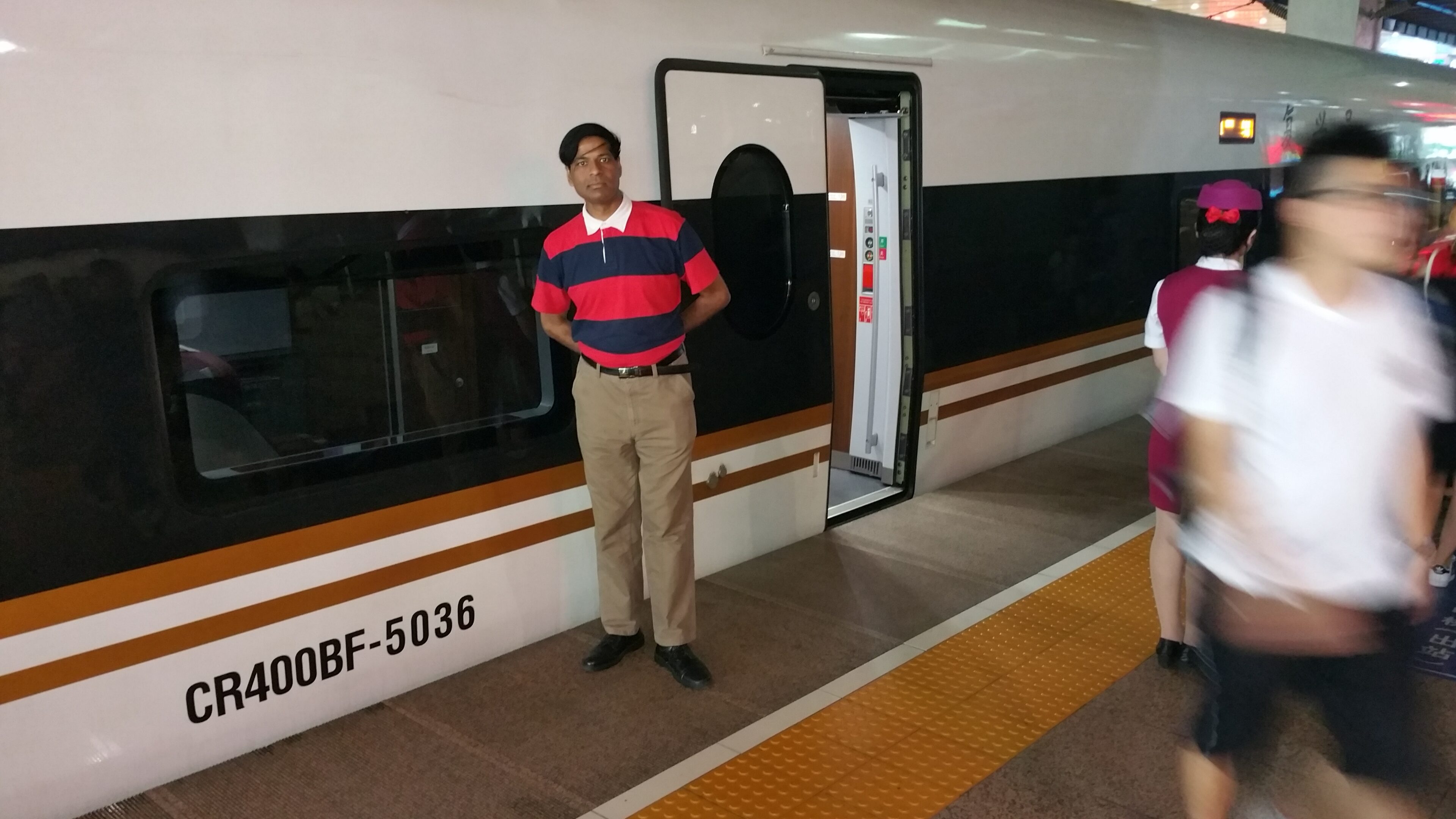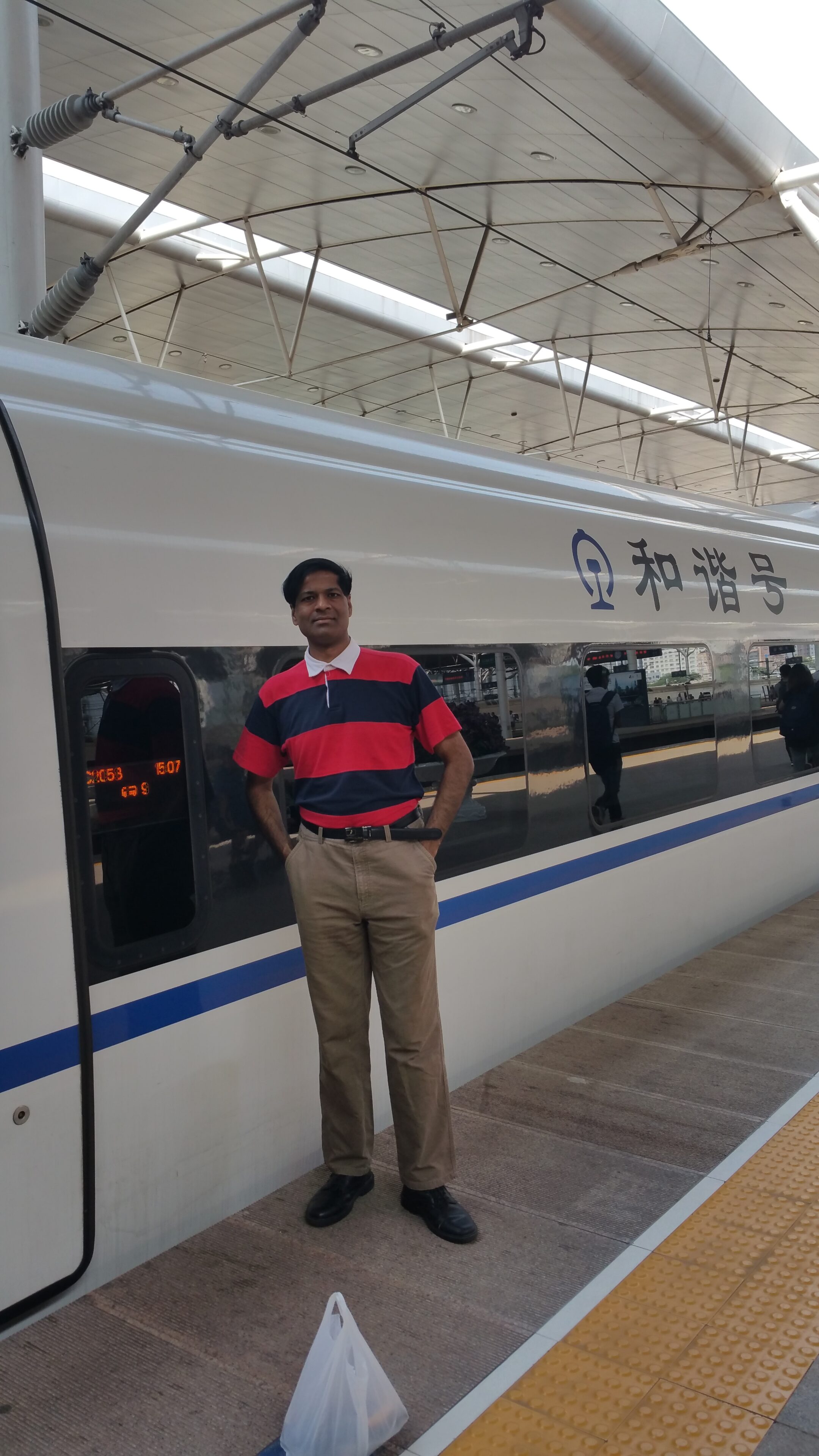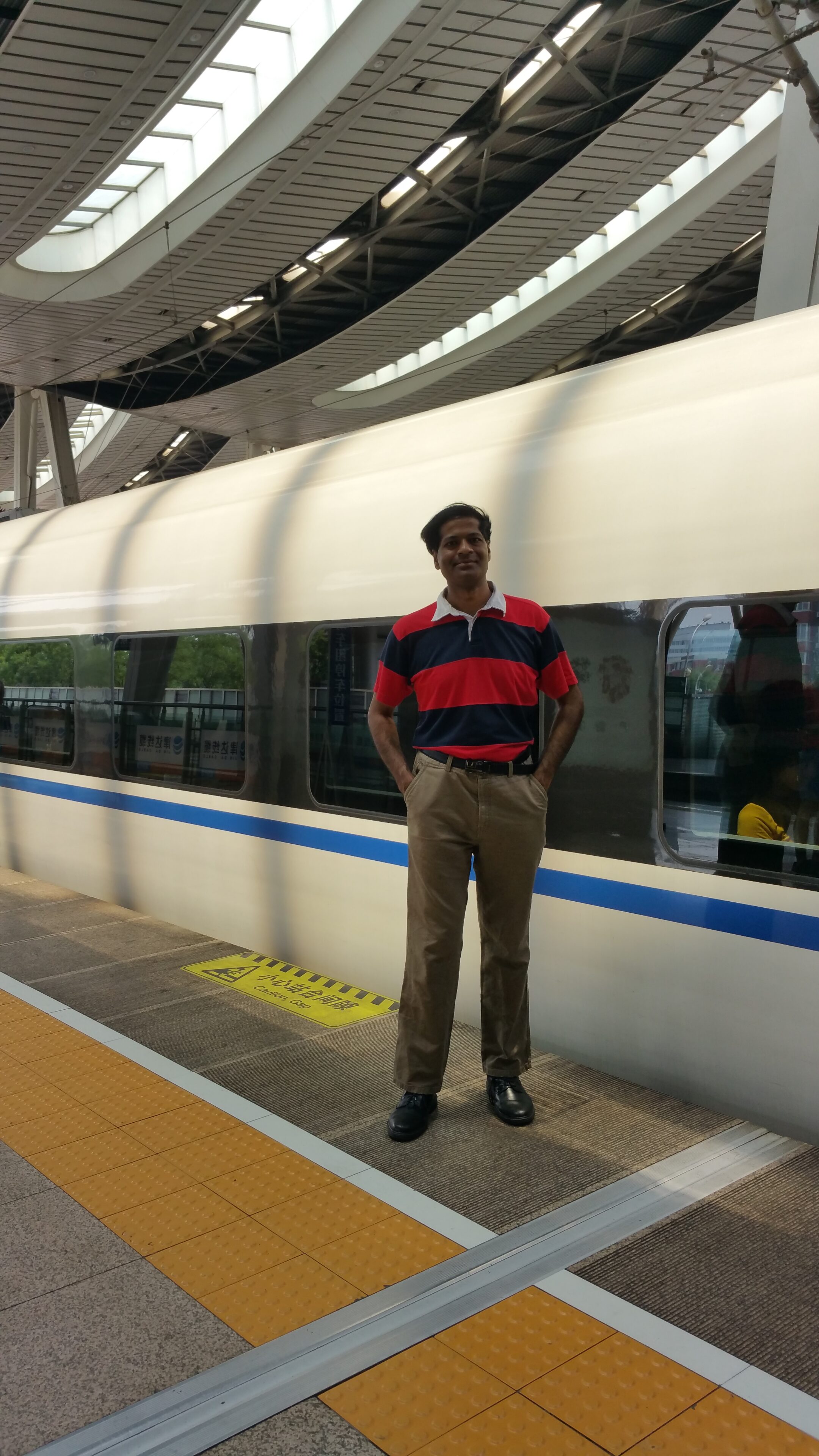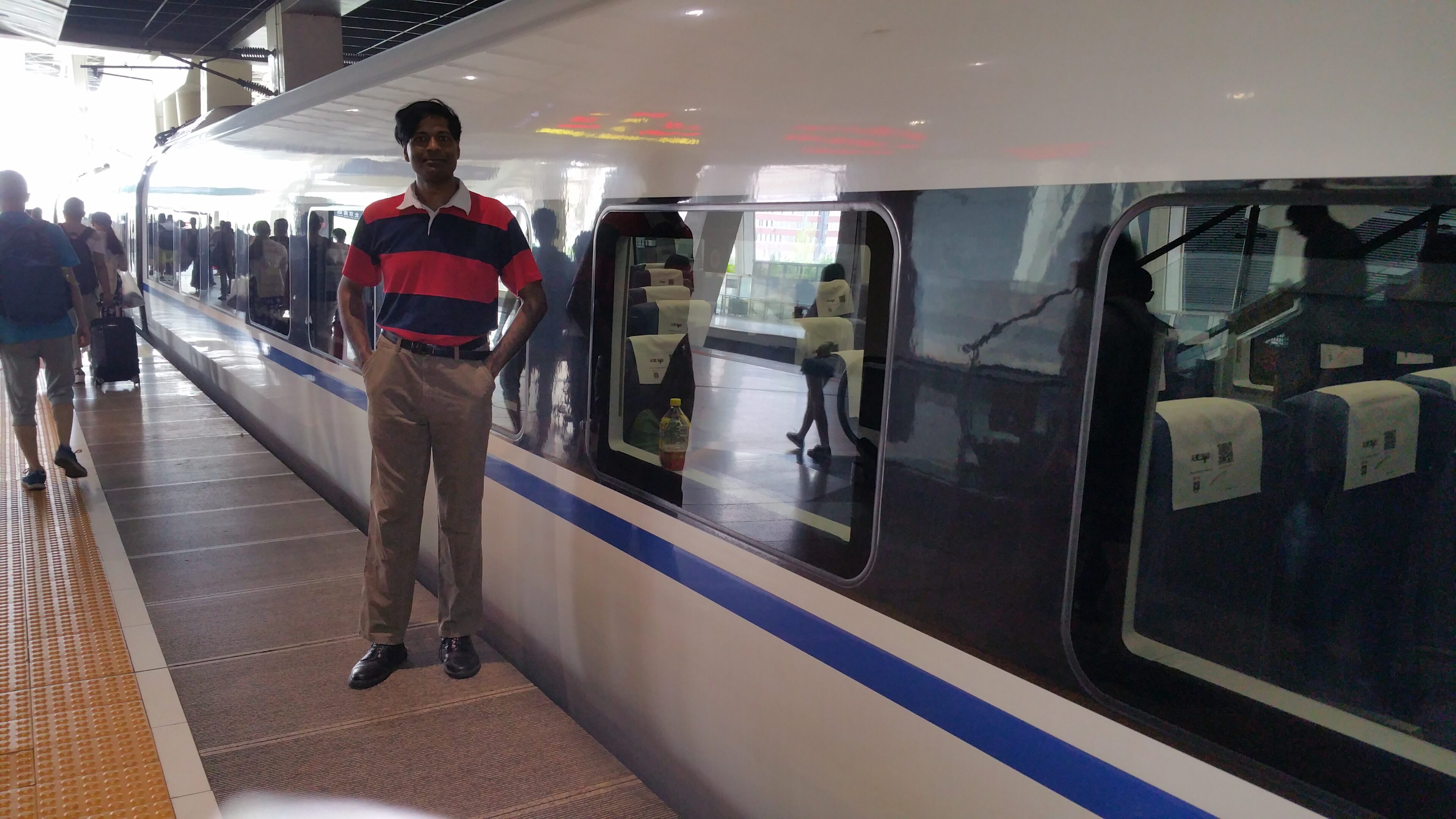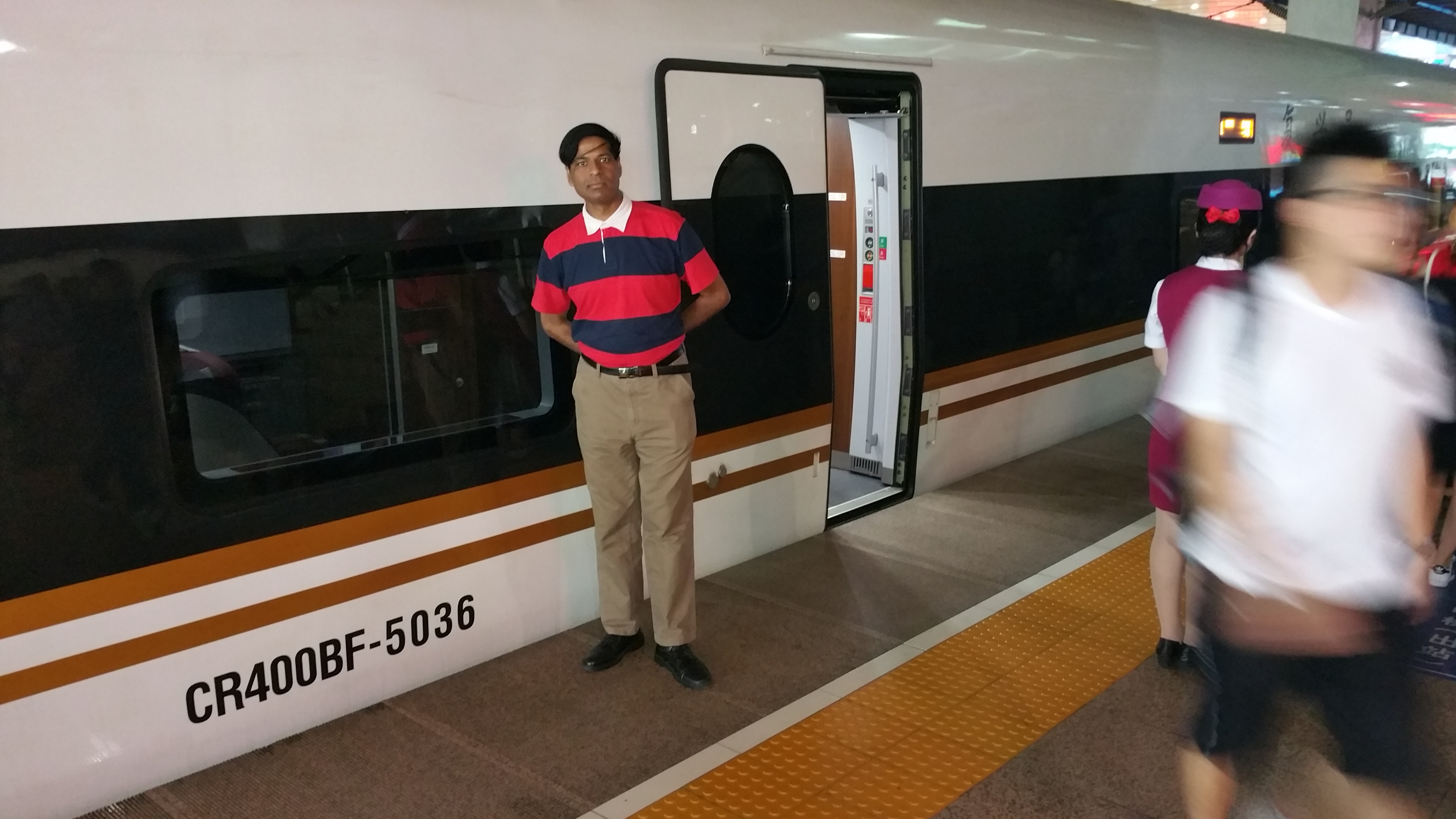
The Beijing–Tianjin intercity railway (simplified Chinese: 京津城际铁路; traditional Chinese: 京津城際鐵路; pinyin: Jīng-Jīn chéngjì tiělù) is a passenger-only high-speed rail that runs 117 km line (72.7 statute miles) between Beijing and Tianjin
The Chinese government built the line to accommodate trains traveling at a maximum speed of 350 km/h (217 mph), and currently carries CRH high-speed trains running speeds up to 330 km/h (205 mph)
The Chinese government built the line to accommodate trains traveling at a maximum speed of 350 km/h (217 mph), and currently carries CRH high-speed trains running speeds up to 330 km/h (205 mph)
When the line opened on August 1, 2008, it set the record for the fastest conventional train service in the world by top speed, and reduced travel time between the two largest cities in northern China from 70 to 30 minutes
A second phase of construction extended this line from Tianjin to Yujiapu railway station in the Binhai New Area was opened on September 20, 2015
The Beijing–Tianjin intercity railway has a current length of 116.939 km (fare mileage: 120 km), of which roughly 100 km is built on viaducts and the last 17 kilometres on an embankment
The elevated track ensures level tracks over uneven terrain and eliminates the trains having to slow down to safely navigate through at-grade road crossings
The line is projected to approach operating capacity in the first half of 2016. Anticipating this, a second parallel line, Beijing–Binhai intercity railway, commenced construction on December 29, 2015
Beijing–Binhai intercity railway will run from Beijing Sub-Center railway station to Binhai railway station via Baodi and Tianjin Binhai International Airport, along a new route to the northeast of the Beijing–Tianjin ICR. (The line use the same track as Beijing-Tangshan intercity railway between Beijing Sub-Center railway station and Baodi
The line opened on August 1, 2008 with 47 daily pairs of intercity trains between Beijing South and Tianjin. Since September 14, 2008, 10 more pairs of trains were added, reducing the minimum interval from 15 minutes to 10 minutes
On September 24, 2008, 4 pairs of trains extended to Tanggu along the conventional railway. On September 28, 2008, 2 more pairs of trains were added into service. Frequencies have consistently been increased since to cope with rising demand. On September 20, 2015, services to Tanggu and Yujiapu transferred on to the parallel high-speed line
These intercity trains are designated by the prefixed “C” (城) followed by four digits, from C2001 to C2298. Of these, C2001–C2198 are non-stop trains from Beijing South to Tianjin. The odd numbers for trains departing from Beijing South and even numbers for those running to Beijing South. Trains numbered C2201–C2268 are trains from Beijing South and Tianjin that stop on the way at Wuqing and Yizhuang stations. Trains C2271–C2298 run from Beijing South to Tanggu.
In addition to the intercity service, 13 pairs of trains were diverted to this line from the preexisting Beijing-Shanghai (Jinghu) Railway, including trains from Beijing South to Jinan, Qingdao, Shanghai, and Tianjin West. With the opening of the Beijing–Shanghai high-speed railway, these trains have been diverted to the new line.
A pair of special track examination trains (numbered DJ01/02) run every day in the morning before any regular trains into service. A track-measuring train (numbered DJ5581/2) runs every ten days. In summary, there are 62 pairs of train in service, 60 of them for passengers. Frequencies are increased over weekends and during major holidays.
Following the Wenzhou train crash, maximum speeds were reduced to 300 km/h, with rides taking only three minutes longer than usual. There have been slight drops in fares to accompany the temporary speed limits
